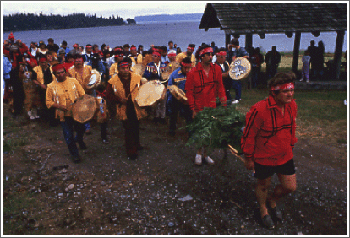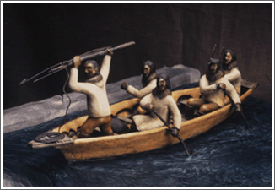Part IV: Representing Ourselves
In this final series of activities students will create a school or classroom exhibit about themselves. Planning and staging an exhibit can be a large undertaking but students will draw on ideas and skills generated through the previous lessons. Provide guidance for students throughout the exercise but have the students take the principal roles of “curators” as well as the “subjects” of the exhibit. (Recommended chapters: 13, 14, 15, 16, 17)
|
Activity 1: Pre-planning |
|
Prior to discussing the exhibit with the class, identify a possible space for the exhibit. Will it be a wall or corner of the classroom? A hallway bulletin board? A display case in the school library? The space selected will largely determine the format and physical content of the exhibit so be sure to think about the specific location, dimensions, security, and availability of the space. Set a calendar for the planning, staging, opening, and duration of the exhibit.
Open a class discussion about museum exhibits in general, and about the Burke’s Pacific Voices or another exhibit with which students might be familiar. (Now would be a good time to schedule a repeat visit to the Burke!) Direct them to thinking about the way information is organized and presented in an exhibit – through objects but also through written words, pictures, sounds, docents, guides, and other staff, etc. While many people visit museums to see and learn something new, few are ever asked to think about the various ways in which information is organized and assembled to reach the viewing audience.
Activity 2: Planning the exhibit
To get things started, help the students write a brief mission statement. The statement can be a short paragraph, or even a single sentence, but it should include the purpose of the exhibit, who the students are, and who the intended audience will be. Refer back to the statement throughout the planning process.
Next, help the
students organize their ideas for the exhibit much as they are accustomed to planning and preparing an outline for a written report or essay. As they seek to represent themselves, is there a main theme or focus? Are there several? What ideas will they include as they seek to define and represent their own collective and separate cultural identities? How will they support their ideas? Students should be thinking about how they would like to see themselves represented ideally and in general terms. Give the students guidance in handling controversial and culturally sensitive topics.
Next, have the students think about the specific content they can include that will serve their ideas (keeping in mind the designated space for the exhibit), just as supporting paragraphs make up the body of an essay. Specific content might take the form of everyday (replaceable) objects, written texts, images and posters accumulated from the previous exercises, or the students may wish to go back and edit their work or even repeat the exercises to generate new content. For particular objects that may be included, have students locate and bring them to class, getting permission when necessary. Have students also get permission for any words or testimonies from interviews to be included.
Once the objects and other content are assembled, sketch a mock-up of the exhibit space on the board with the class. Pay close attention to the precise dimensions of the space, but also to the lighting and expected flow of traffic for the exhibit. Help the students to visualize how the final exhibit space will appear and how it will be experienced by visitors. The goal is to make the exhibit “legible” in the sense that it tells the story of the students’ own crafting, and that the story is easily understood by the intended audience.
Activity 3: Staging the exhibit
The actual production of the exhibit can be a smooth process if it is thoughtfully planned ahead of time. Divide the students into work teams to handle the many tasks required – for example, ask one team to assemble and prepare objects, one to write object labels, another to create posters and larger text panels, another to edit testimonies and previous writings, etc. Encourage students to use their individual strengths (artistic ability, writing skill, computer/graphics skills, etc.), and help them form teams strategically. Allow enough time for production work, keeping in mind the physical parameters of the exhibit.
Activity 4: Opening the exhibit
On the date of the exhibit opening, invite other students, faculty, and community members to participate in the celebration. Have the student teams present a few opening remarks about their ideas for the exhibit and the process of putting it together.


